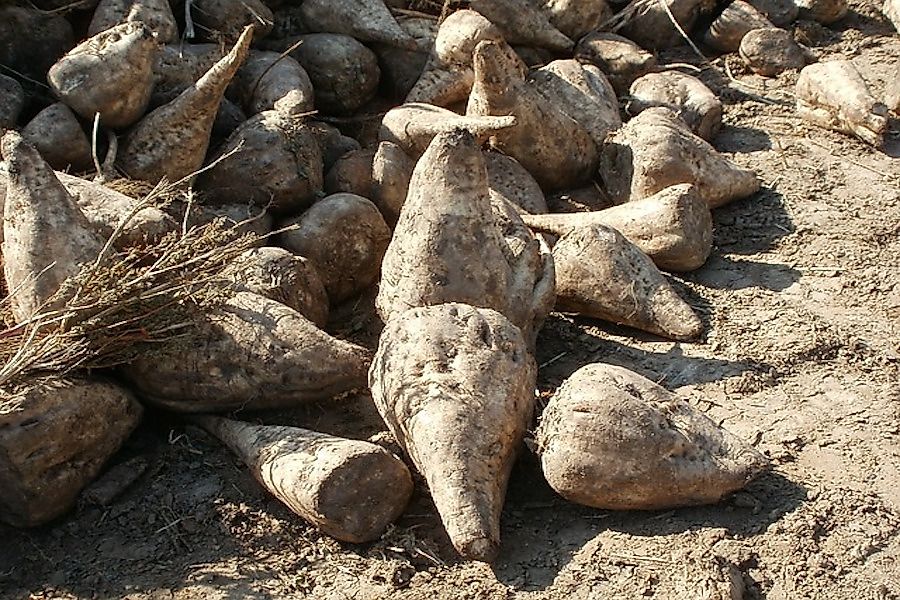The Top Sugar Beet Producing Countries In The World

Sugar beet, cultivars of the common beet, contains a rich concentration of sucrose in its roots and is thus utilized for commercial sugar production. The sugar beet plant grows only in the temperate zone of the world, unlike sugarcane which grows in the subtropical and tropical zones.
Description Of The Plant
The sugar beet has a taproot that is conical, fleshy, and white. A rosette of leaves grow above the roots. The sugar produced by photosynthesis is stored in the root of the plant. The foliage of the plant is brilliant green and grows to about 14 inches in height. The broad leaves grow from the crown of the beet in a tuft.
The Cultivation Of Sugar Beet
The sugar beet requires soil that is rich in organic matter, especially humus, and retain a good deal of moisture. Although the crop can be grown in heavy loams or sandy soil, the ideal soil for sugar beet cultivation is sandy loam. Since cultivation to a depth from 30.5 to 38.1 cm is needed, the presence of a subsoil layer of gravel or a hard-pan is not desirable ground properties for growing sugar beet. A temperature ranging between 15 to 21 °C is most desirable. If irrigation facilities are lacking, a rainfall of 460 mm is optimum.
Production Of Sugar Beet
In 2013, 250,191,362 metric tons of sugar beet was harvested. Russia was the largest producer with 39,321,161 metric tons of production. Worldwide, the average yield of the crop was 58.2 tons per hectare. Chile had the most productive sugar beet farms with a yield of 87.3 tons per hectare. France, United States, and Germany are the other three largest producers of sugar beet in the world.
Uses Of Sugar Beet
The root of the sugar beet is 20% sugar, 5% pulp, and 75% water. The sugar of the sugar beet is of primary value and the pulp left after sugar extraction is used as animal feed. The byproducts of this crop include molasses and pulp and this adds a further 10% value to the cash crop.
In many countries, sugar beet is used to make alcoholic beverages. Sugary syrup prepared from sugar beet is used as a sweetening spread in sandwiches and other food products. Desugared beet molasses are often used as anti-icing products on roads during winter by road authorities in North America. Chemicals like uridine and betaine are produced as by-products of sugar beet processing. Sugar beets also form an important crop for crop rotation cycles.
The Top Sugar Beet Producing Countries In The World
| Rank | Country | Production of sugar beet (in million tonnes), 2013 |
|---|---|---|
| 1 | Russia | 39.2 |
| 2 | France | 33.6 |
| 3 | United States | 29.8 |
| 4 | Germany | 22.8 |
| 5 | Turkey | 16.5 |
| 6 | China | 12.1 |
| 7 | Ukraine | 10.8 |
| 8 | Poland | 10.6 |
| 9 | Egypt | 10.0 |
| 10 | United Kingdom | 8.0 |
| 11 | World | 250.2 |











